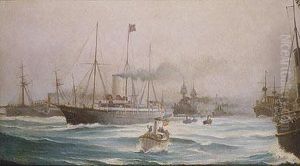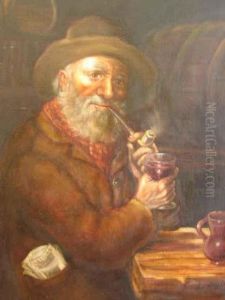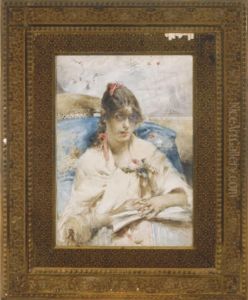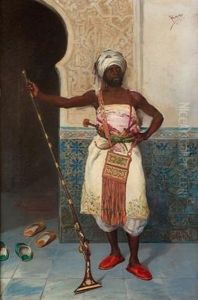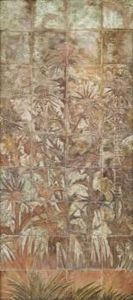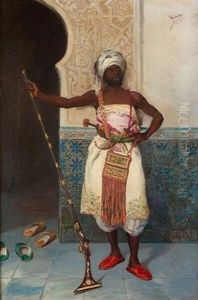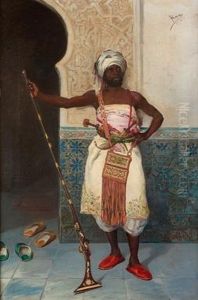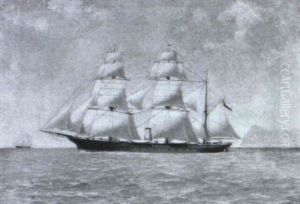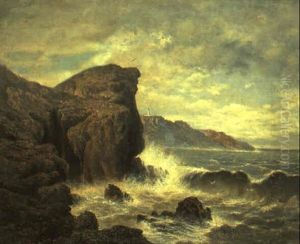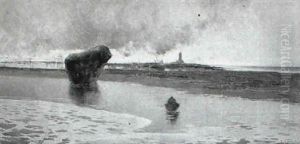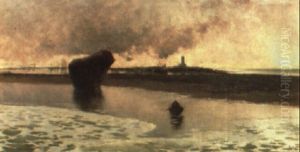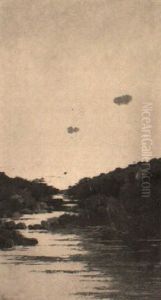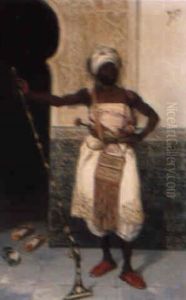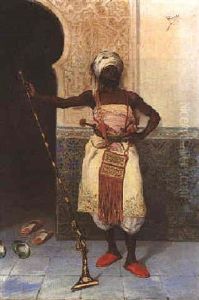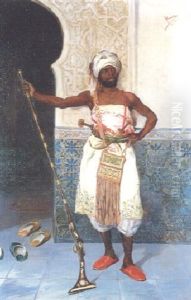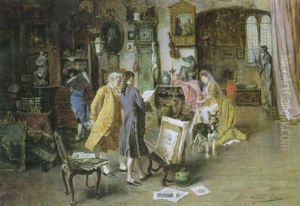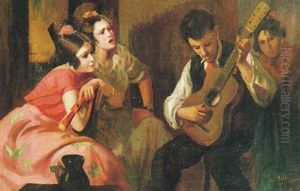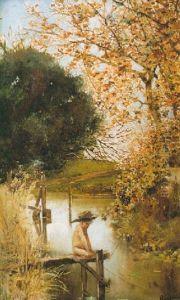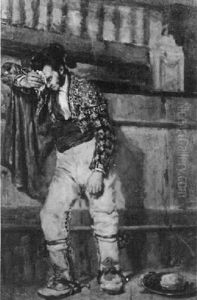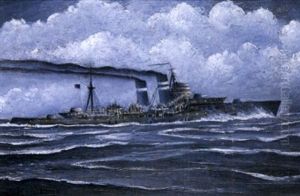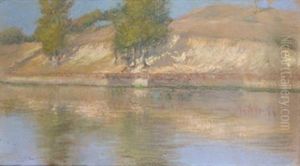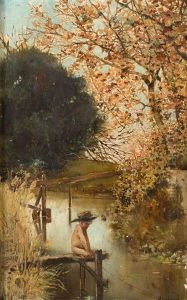Justo Ruiz Luna Paintings
Justo Ruiz Luna was a notable Spanish painter, born in 1866 in the city of Cádiz, Spain. He is often celebrated for his contributions to the landscape and maritime genre of painting, reflecting a keen observation of natural light and atmosphere. Ruiz Luna's artistic journey began under the guidance of his uncle, the painter Manuel Ruiz Moragas, which laid the foundation for his classical training in the arts. His pursuit of artistic excellence led him to the Real Academia de Bellas Artes de San Fernando in Madrid, where he honed his skills and embraced the academic traditions of painting.
Throughout his career, Ruiz Luna was particularly admired for his ability to capture the essence of the Spanish landscape, imbuing his works with a sense of realism and emotive depth. He often depicted scenes from the Spanish countryside and coast, showcasing his adeptness at rendering light and shadow, which added a lyrical quality to his paintings. His works not only reflected his love for the Spanish landscape but also demonstrated his mastery of atmospheric effects, making him a significant figure among Spanish landscape painters of his time.
In addition to his landscape works, Ruiz Luna also explored historical and genre scenes, although these are less known compared to his landscape and maritime paintings. His artistic contributions were recognized by his contemporaries, and he was awarded several honors throughout his career, including accolades at national exhibitions in Spain. Ruiz Luna's commitment to capturing the natural beauty of Spain remained evident throughout his oeuvre, making him an enduring figure in the canon of Spanish art.
Justo Ruiz Luna passed away in 1952, leaving behind a legacy that continues to be celebrated for its contribution to the development of landscape painting in Spain. His works are preserved in various museums and collections, offering insight into the artistic endeavors and cultural landscape of Spain during his lifetime. Through his paintings, Ruiz Luna has provided future generations with a window into the soul of Spanish landscapes, marked by a delicate interplay of light, color, and composition.
